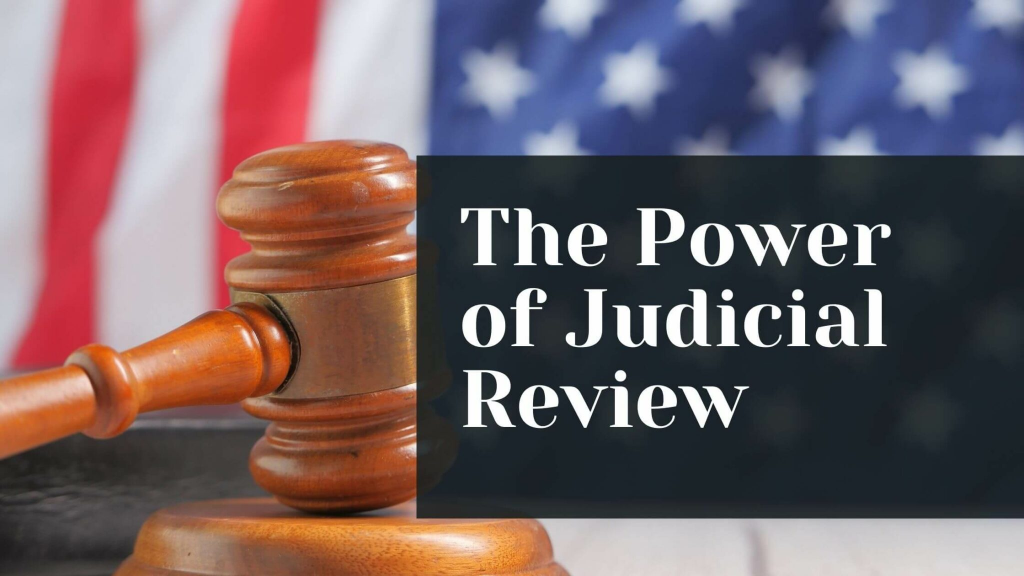In today’s United States, the judicial power, represented by the Federal District Courts and the Supreme Court, stands alongside the legislative power of Congress and the executive power of the President, forming a balance of power known as the separation of powers. Among these branches, the Supreme Court justices (currently nine in total) seem almost godlike, isolated and untouchable. But this lofty position was not granted by a halo of respect surrounding the justices; rather, it comes from a powerful principle: judicial review.
What is Judicial Review?
Judicial review means that the courts have the authority to review laws. It’s the court’s job to judge the law itself, not the people behind it. If the Supreme Court finds that a law passed by Congress or a state is unconstitutional, that law is nullified. Who decides the meaning of the Constitution? How broad is federal power? What defines freedom, and how are human rights reflected in law? The answer to all these questions is determined by the courts, and specifically, the Supreme Court. But the interesting thing is that the Constitution doesn’t actually mention judicial review at all. It was a principle created out of thin air, and some even argue it might be unconstitutional itself. However, the American people embraced it, especially because it was the brainchild of one man: Chief Justice John Marshall.

The Foundation of the Supreme Court
To understand Marshall’s role, let’s first explore the Constitution’s design of judicial power. Because each state has its own independent judicial system, the Constitution’s design of federal judicial power is quite simple. It specifies that federal courts have jurisdiction over cases involving the Constitution, foreign treaties, and disputes between states. There are two levels of federal courts: District Courts (the trial courts) and the Supreme Court. If someone disagrees with a decision made in a District Court, they can appeal to the Supreme Court. The Constitution also specifies the jurisdiction of these courts—original jurisdiction and appellate jurisdiction.
Original jurisdiction typically belongs to lower courts, with juries deciding cases. However, in cases involving foreign diplomats or disputes between states, the Supreme Court has original jurisdiction. Appellate jurisdiction belongs exclusively to the Supreme Court, which functions as the final court of appeal, reviewing lower court rulings and making the final decisions.
Although judicial review isn’t mentioned in the Constitution, the founding fathers clearly intended for “judicial independence” to be a key principle. One of the most important ways this was ensured was through life tenure. Federal judges—whether Supreme Court justices or District Court judges—are appointed for life by the President and confirmed by Congress, unless they are impeached. This tenure allows judges to be free from political pressure, ensuring they can be impartial in their decision-making.
A Powerful, Yet Fragile System
Despite the life tenure protecting judges from political influence, the judicial system wasn’t always as powerful as it is today. When Marshall became the fourth Chief Justice in 1801, the Supreme Court was practically invisible. The first three Chief Justices, though respected, didn’t leave much of a mark. Initially, the Supreme Court was not seen as an essential part of the government. In the first year and a half of its existence, the Court didn’t even hear a single case. Judges would meet only six weeks a year in Washington, D.C., often with few cases to decide.
At that time, Supreme Court justices also had to travel extensively between states, which was grueling and hazardous due to poor road conditions. The Court itself didn’t have its own building, and it was cramped into a small meeting room in the Capitol. The judiciary was seen as a second-tier branch of government, and it was almost entirely overshadowed by the attention given to Congress and the President.
But everything changed when John Marshall took office.
John Marshall: The Man Who Created Judicial Review
Marshall’s greatest accomplishment was the creation of judicial review. He made the Supreme Court not just an institution for resolving legal disputes but a powerful body that could interpret the Constitution. His landmark decision in Marbury v. Madison (1803) set the foundation for judicial review. In this case, Marshall established the principle that the Supreme Court could strike down laws that were found to be unconstitutional, a move that solidified the Court’s authority in American government.
Marshall also made significant reforms to the way the Court operated. Before his leadership, when the justices would deliver their opinions on cases, each one would write a separate opinion, making decisions chaotic and hard to follow. Marshall streamlined this process, ensuring that the Court delivered one opinion for each case, thus improving efficiency and demonstrating unity among the justices.
The Lasting Legacy of Marshall’s Court
Marshall’s reforms transformed the Supreme Court from an overlooked institution into a central player in the American political system. His decisions, especially in Marbury v. Madison, gave the judiciary a critical role in checking the powers of the legislature and the executive. This principle of judicial review continues to be a cornerstone of American law and government today.
As we look at the modern U.S. judicial system, it’s clear that Marshall’s vision has endured. The Court still serves as the final arbiter of the Constitution and has the power to overturn laws that conflict with it. The principle of judicial review, though not written into the Constitution, has become an indispensable part of American governance, balancing the powers of the other branches of government and ensuring that the Constitution remains the supreme law of the land.
Conclusion
The creation of judicial review by John Marshall wasn’t just a brilliant legal move—it was a foundational moment in the history of American democracy. It ensured that the judiciary would have a powerful, independent voice in the interpretation of the Constitution, and its impact continues to shape American law and politics to this day.

No comments yet.